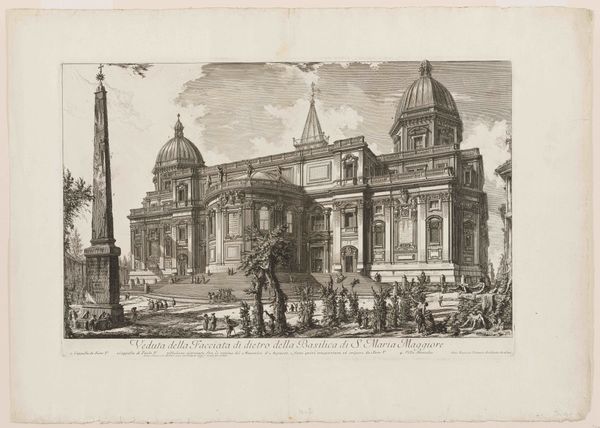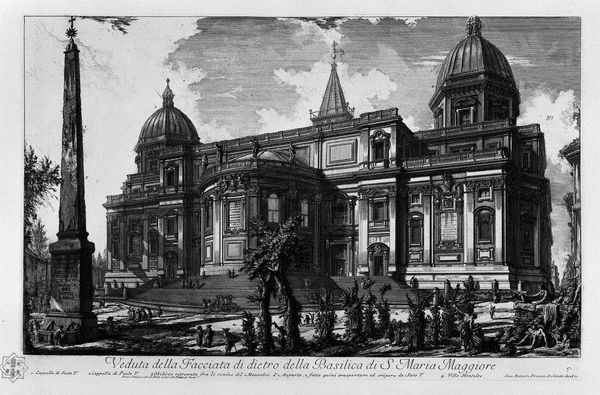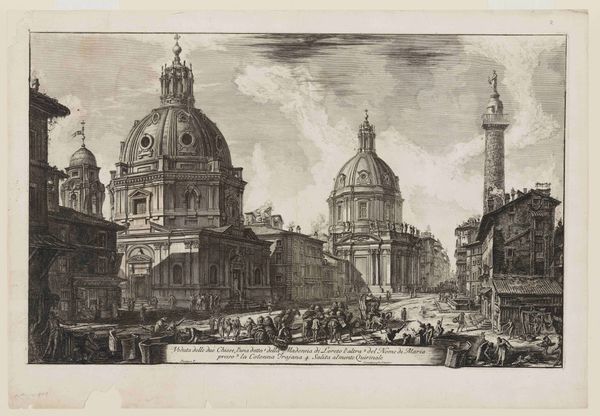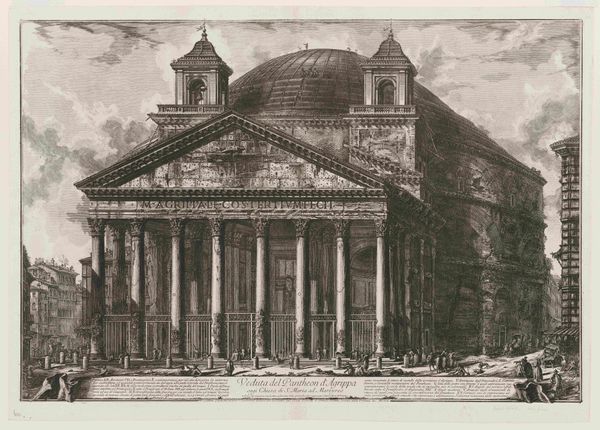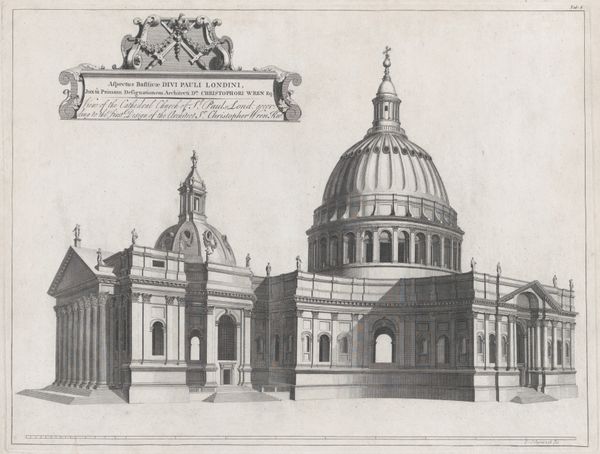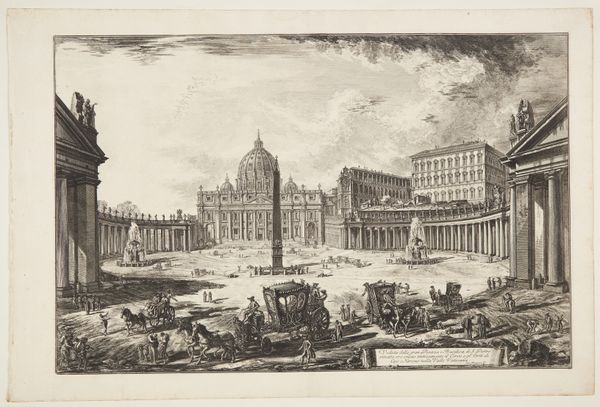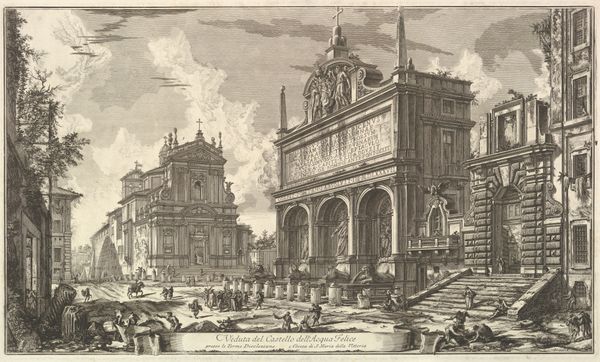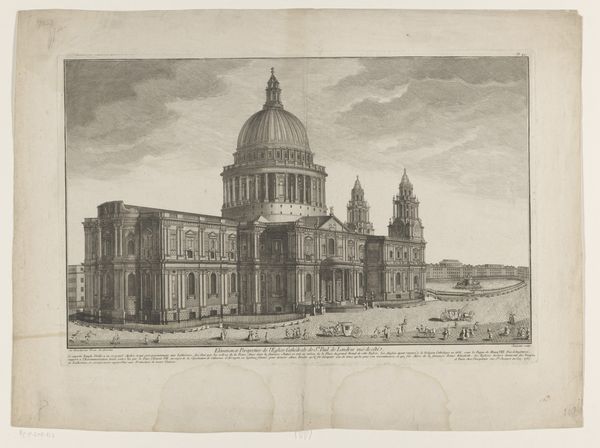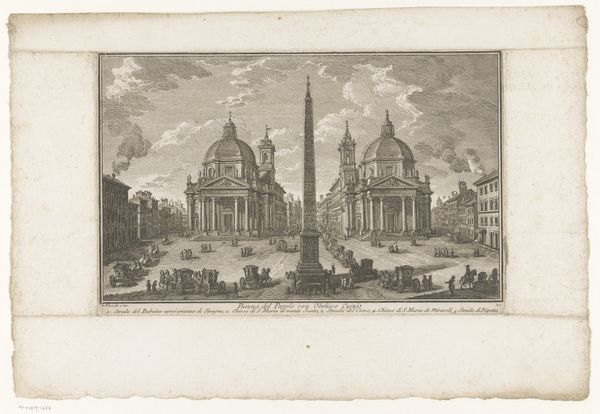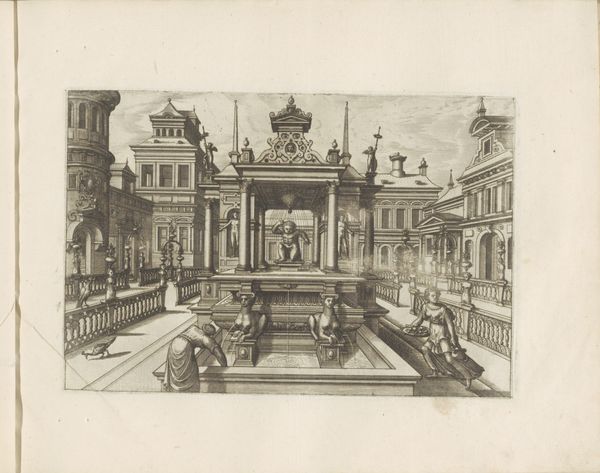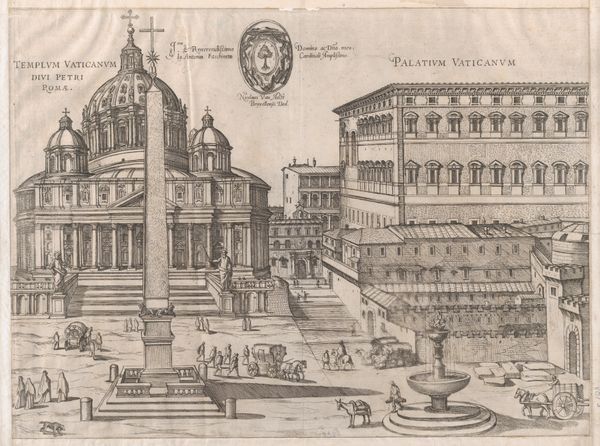
View of the rear entrance of the Basilica of S. Maria Maggiore, from Veduta di Roma (Roman Views) 1737 - 1747
0:00
0:00
drawing, print, etching, architecture
#
drawing
#
baroque
# print
#
etching
#
landscape
#
cityscape
#
architecture
Dimensions: Sheet: 18 1/8 x 30 in. (46 x 76.2 cm) Plate: 15 13/16 x 24 3/16 in. (40.2 x 61.5 cm)
Copyright: Public Domain
Editor: Here we have Piranesi’s etching, "View of the rear entrance of the Basilica of S. Maria Maggiore, from Veduta di Roma," created sometime between 1737 and 1747. The detail is just incredible. All those tiny figures… it gives a sense of the everyday bustle against the grandeur of the basilica. What do you see in this work? Curator: For me, the interest lies in understanding this print not just as a representation, but as a *product* of eighteenth-century Rome. Look at the sheer labor involved in creating this etching; the multiple states it likely went through. We can imagine the workshop, the artisans involved, the networks required to distribute it. Editor: So, you're saying it's more than just an image, it’s an artifact of a particular economic and social system? Curator: Exactly. And consider the intended audience: likely wealthy tourists, buying these prints as souvenirs. This piece is itself a commodity, feeding into a burgeoning tourist industry and reinforcing certain power dynamics between the viewers and those depicted within the cityscape. The architecture and the etched image of the architecture served their purpose, no? Editor: That's a perspective I hadn’t considered. So the value isn’t solely in the artistic skill but in its role within this system of production and consumption? Curator: Precisely! It asks us to think about art’s purpose, not just its aesthetic qualities. Whose Rome is being represented, and for whom? Editor: This gives me a completely new framework for interpreting historical prints! It reveals hidden labor aspects! Curator: Indeed. By examining the material conditions and social context of its production, we gain a much richer understanding of both the artwork and the society that produced it.
Comments
No comments
Be the first to comment and join the conversation on the ultimate creative platform.
